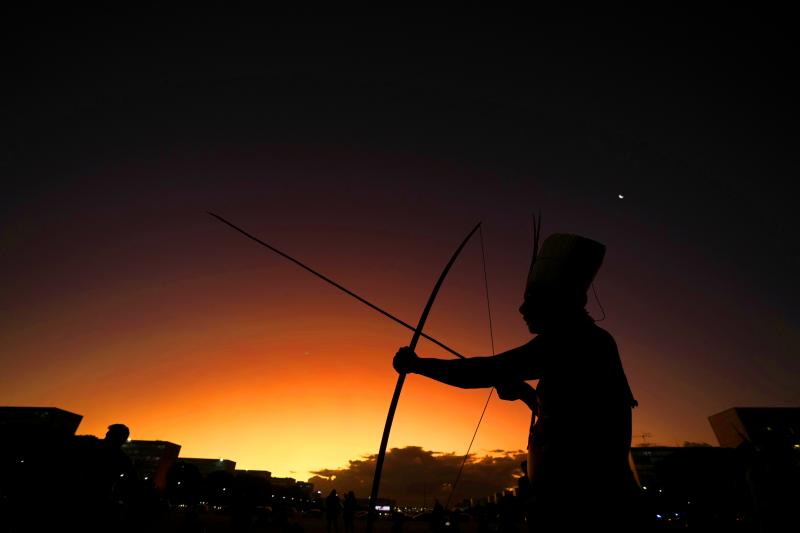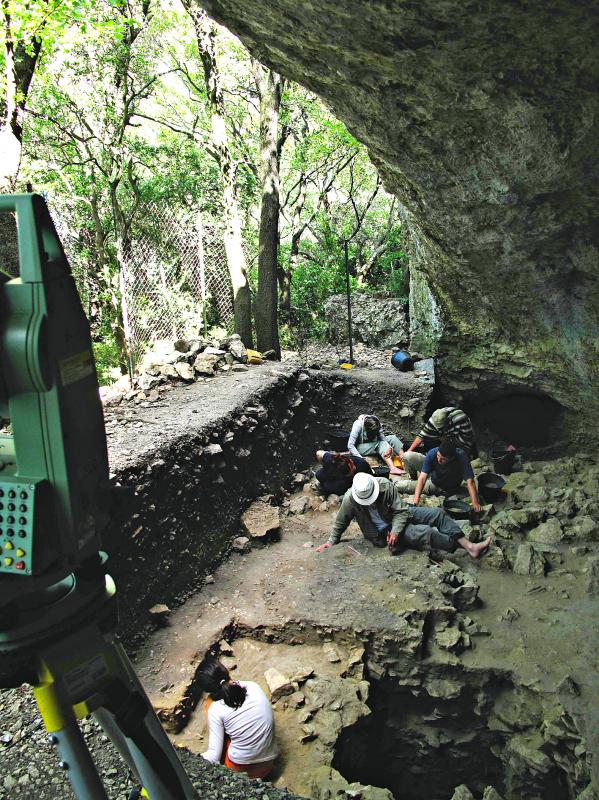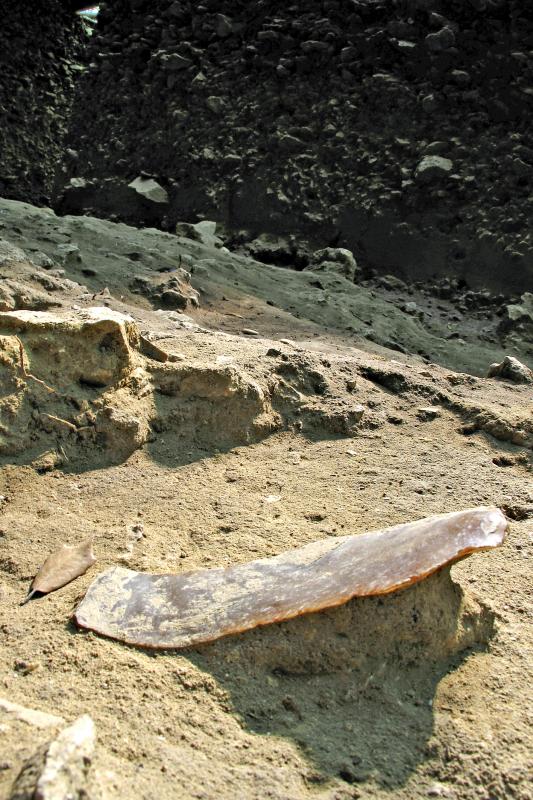It is a weapon whose effectiveness was overtaken centuries ago by the gun and rifle. Yet the bow and arrow may deserve a prize place in the history of our species, say scientists. They believe archery could have been critical to Homo sapiens’ conquest of the planet, helping modern humans emerge from their African homeland tens of thousands of years ago.
Early archers would have been able to kill their prey at a considerable distance while at the same time giving their diets a protein boost without endangering themselves, say researchers. It has also become clear that bow-and-arrow technology is ancient, with some of the oldest arrowheads traced to caves in South Africa and dated to around 64,000 years ago.
Outside Africa, the earliest evidence of archery was some 48,000-year-old arrowheads found in a Sri Lankan cave two years ago. However, that date is now expected to be pushed back to around 54,000 years, after scientists — led by Ludovic Slimak of the University of Toulouse — revealed they had uncovered evidence that modern humans colonized the Grotte Mandrin cave in the Rhone Valley. Finds included a tooth of a modern human child and a set of tiny pointed stone tools that look very like arrowheads.

Photo: AP
Slimak said his team still had to confirm that these tools were arrowheads but stressed that the technology would have given modern humans a key advantage over Neanderthals who then occupied Europe.
“An animal 100 meters away will think you are too distant to be dangerous and won’t move away,” Slimak said. “With a bow and arrow, you could pick it off easily. Equally importantly, you’ll be too far away for it to attack you if it is wounded and gets angry. So you can hunt safely and provide more protein for your group.”
Professor Chris Stringer, of the Natural History Museum, London, added that it was now clear that the bow and arrow was a technology that was invented at different times in different parts of the world, underlining its importance to our species’ spread.

Photo: AFP
“The crucial thing about making a bow is that you really need to know your materials. You have to pick a species of tree that has the right flexibility because the inside of a bow has to withstand considerable compression while the outside has to withstand stretching. You also need expert technicians to make the string, the arrowheads and the arrow shaft. The whole technology requires considerable expertise.”
Slimak added that the tools uncovered at Grotte Mandrin were highly standardized.
“The Neanderthals could make magnificent stone tools, but each was a one-off,” he added. “By contrast, those made by modern humans were very light, compact and uniform in size. This was an industry.”

Photo: AP
The Grotte Mandrin settlement puts the date of modern humans’ first appearance in western Europe about 12,000 years earlier than previous estimates. Despite their technical abilities, these settlers did not survive, however.
After a period of perhaps 40 years, signs of the presence of modern humans on the Rhone disappear. Having spent all their lives in the region, this generation vanishes from the archaeological record. Then, around 2,000 years later, the site was reoccupied — by Neanderthals. So what happened to that early group of modern human colonizers? Slimak believes there were up to 100 men, women and children in the Grotte Mandrin settlement, descendants of modern humans who had traveled from the Levant along the Mediterranean coast.
“There might not have been enough of them to maintain their biological strength, and they could not exchange genes with the locals, the Neanderthals. This is possibly because they did not have good enough relations with them or because the fertility between them was poor.”
This point was backed by Stringer.
“If you’ve got a small group of men, women and children, it’s likely you have only got a very small number of specialists — for instance, those skilled in making each element of the bows and arrows they were using, individuals who would know which trees to pick for making a bow and others who would know how to produce string and arrows. In that case, you’re going to be vulnerable if you lose one or two of them to hunting accidents or disease. If they haven’t passed on their expertise to others in the group, you’ll end up lacking critically important knowledge.”
Stringer added it was also possible that climate change might have had an impact on the Grotte Mandrin group.
“There are only a few species of trees whose wood is flexible and strong enough to make bows. So if there was a change in climate, those trees might have become rarer or even died out completely, and the group may have found it could not replace their bows and arrows. Their reliance on them would have left them exposed and fragile.”
The Grotte Mandrin outpost appears to be one of several ultimately unsuccessful attempts by modern humans to settle in Europe before eventually taking over the continent. Sites in Romania and the Czech Republic have also been found to contain remains of our species from 40,000 to 50,000 years ago. However, bone analysis have produced genetic profiles that have no match among modern Europeans. As Stringer puts it: “These are some of our species’ lost lineages.”

June 9 to June 15 A photo of two men riding trendy high-wheel Penny-Farthing bicycles past a Qing Dynasty gate aptly captures the essence of Taipei in 1897 — a newly colonized city on the cusp of great change. The Japanese began making significant modifications to the cityscape in 1899, tearing down Qing-era structures, widening boulevards and installing Western-style infrastructure and buildings. The photographer, Minosuke Imamura, only spent a year in Taiwan as a cartographer for the governor-general’s office, but he left behind a treasure trove of 130 images showing life at the onset of Japanese rule, spanning July 1897 to

In an interview posted online by United Daily News (UDN) on May 26, current Chinese Nationalist Party (KMT) Chairman Eric Chu (朱立倫) was asked about Taichung Mayor Lu Shiow-yen (盧秀燕) replacing him as party chair. Though not yet officially running, by the customs of Taiwan politics, Lu has been signalling she is both running for party chair and to be the party’s 2028 presidential candidate. She told an international media outlet that she was considering a run. She also gave a speech in Keelung on national priorities and foreign affairs. For details, see the May 23 edition of this column,

The Taiwan People’s Party (TPP) on May 18 held a rally in Taichung to mark the anniversary of President William Lai’s (賴清德) inauguration on May 20. The title of the rally could be loosely translated to “May 18 recall fraudulent goods” (518退貨ㄌㄨㄚˋ!). Unlike in English, where the terms are the same, “recall” (退貨) in this context refers to product recalls due to damaged, defective or fraudulent merchandise, not the political recalls (罷免) currently dominating the headlines. I attended the rally to determine if the impression was correct that the TPP under party Chairman Huang Kuo-Chang (黃國昌) had little of a

At Computex 2025, Nvidia CEO Jensen Huang (黃仁勳) urged the government to subsidize AI. “All schools in Taiwan must integrate AI into their curricula,” he declared. A few months earlier, he said, “If I were a student today, I’d immediately start using tools like ChatGPT, Gemini Pro and Grok to learn, write and accelerate my thinking.” Huang sees the AI-bullet train leaving the station. And as one of its drivers, he’s worried about youth not getting on board — bad for their careers, and bad for his workforce. As a semiconductor supply-chain powerhouse and AI hub wannabe, Taiwan is seeing